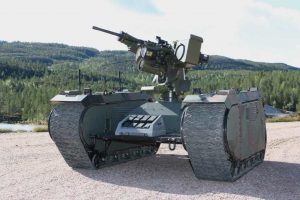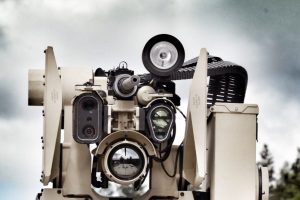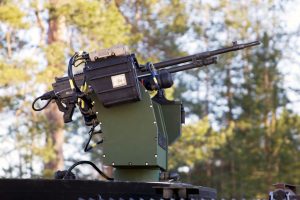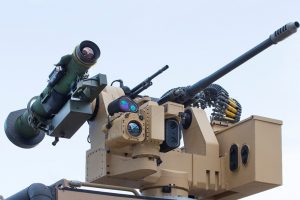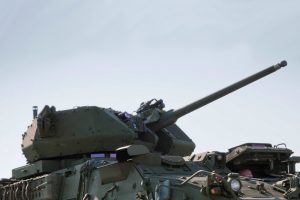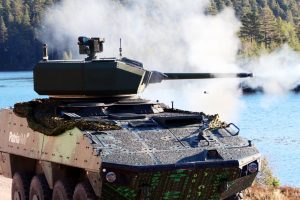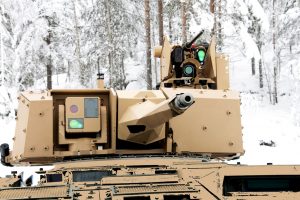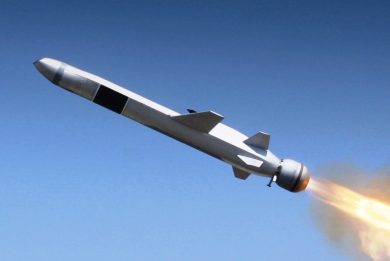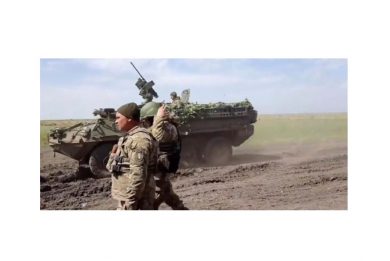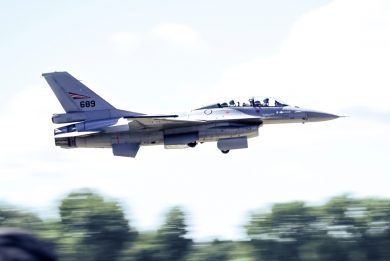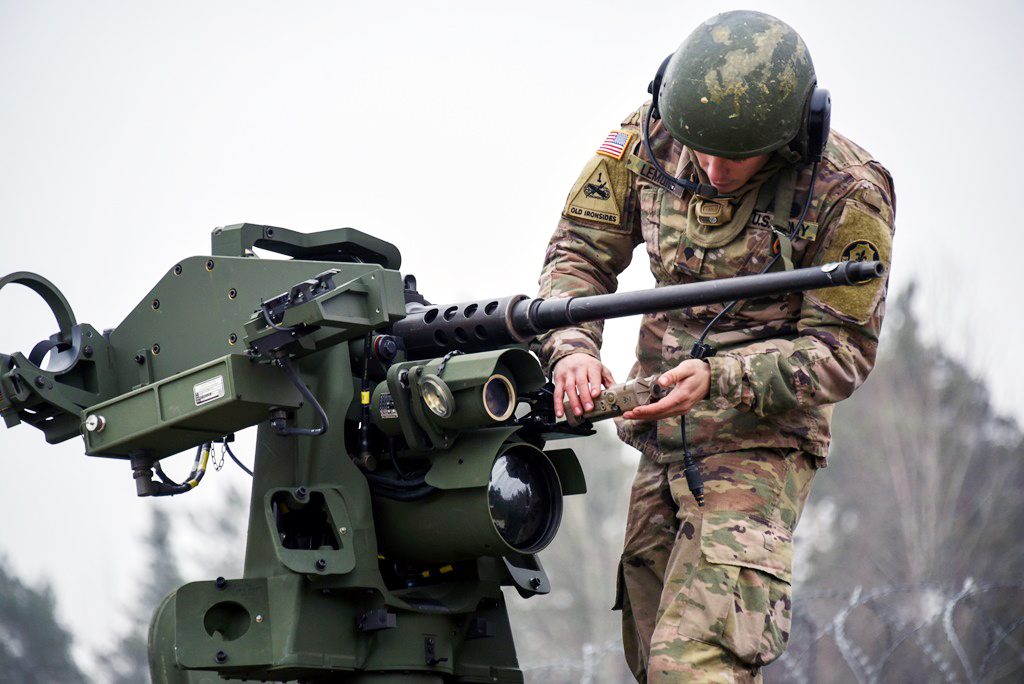
Kongsberg renews names and products
By Paolo Valpolini
31 May 2021 – The recognised world leader in the remotely controlled weapon stations market, with over 20,000 of its Protector produced, Kongsberg of Norway has recently reshuffled the weapon stations and turrets line of products, adding new systems and changing the designation of its portfolio. To better understand the new offer of the company EDR On-Line talked to Arne Gjennestad, Kongsberg’s Defence & Aerospace Vice President Business Development.
“We worked on a re-branding of our products as in some cases they were too much linked to the weapon’s calibre, i.e. the MCT-30, MCT standing for Medium Calibre Turret, seemed to be dedicated only to the 30 mm cannon which was not the case, as it could also be armed with the “Super-40” 40×180 mm ordnance. We therefore decided to go for names unrelated to the calibre, the Protector RS series, for Remote Station, and the Protector RT series, for Remote Turret,” he explains.
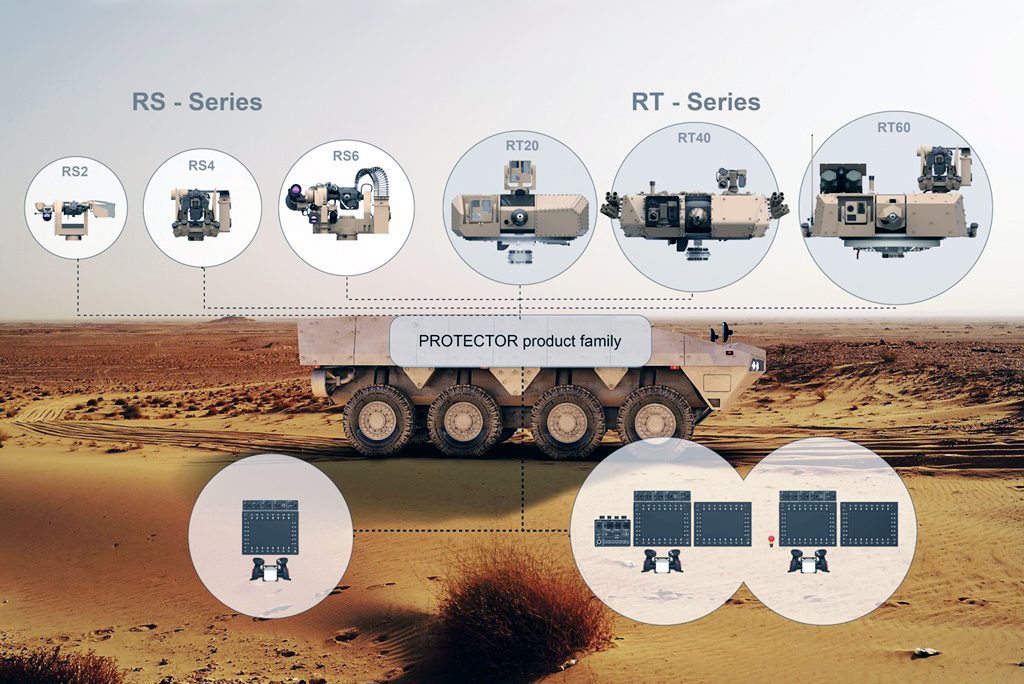
With names being as generic as possible, the new portfolio is based on three RS and three RT, all controlled via the same software, the human-machine interface being also common, both series features a single or double screen interface, and both the weapons stations and e turrets can be controlled by one, two or more operators. “A key issue is that our fire control system, that is being qualified in the United States and other nations, has a secure packed based transfer, which can be transferred over Ethernet or for example wireless link, which makes it very flexible, opening up the installation of our systems on robotic platforms,” Gjennestad says.
To view the video of the wireless fire control capability for Robotic Combat Vehicles carried out in June 2019 at the Redstone Arsenal please click HERE
In early July 2020 the US Army selected Kongsberg to provide its wireless solution to standardise the fire control capability of its unmanned weaponised programmes, namely the Robot Combat Vehicle-Light and -Medium (RCV-L and RCV-M). The two unmanned platforms are being equipped respectively with a PROTECTOR CROWS, aka RS4, and an MCT-30, now RT40, as government furnished equipment, the RT40 being originally provided for the Stryker qualification programme. The Kongsberg software solution supports multi-user/multi-station architectures, allowing i.e. a single operator to control many systems from a dismounted controller, his console installed into an armoured vehicle, in a manned/unmanned teaming operational scenario, or from a control room, in a static situation like a Forward Operating Base force protection deployment. Maximum commonality of subsystems has been also pursued, in order to reduce the logistic footprint as well as costs, while modularity has also been enhanced, allowing to swiftly integrate different weapons and sensor packages.
Although the name Protector remains, the systems are now identified by numbers, the weapon stations line being based on the RS2, RS4 and RS6, while the turret line is made of the RT20, RT40 and RT60.
Protector RS4, the link to the Protector RWS family
The RS4 stands in the middle of the new remote stations family, and is in fact based on the standard Protector, the M151, with the addition of the aforementioned improvements in terms of software and modularity. The RS4 can be fitted with an M2 Browning 12.7 mm machine gun, or a 40 mm automatic grenade launcher (AGL), Mk19, H&K 40 or GD-OTS Mk47 Striker, or with an M240/M249 7.62/5.56 mm machine gun. The two latter weapons can also be installed as secondary weapons in addition to a 12.7 or 40 mm AGL system, a Javelin antitank missile being also a possible secondary weapon solution, the ammunition load for the two primary weapons being 400 rounds for the machine gun or 200 grenades for the AGL. Six or four smoke grenade launchers can be added, as well as a ballistic protection and a searchlight. However the most interesting option is the air burst capability, which is key to the Counter Unmanned Air System (C-UAS) solution selected by the German Army, the weapon station being linked to a Spexer 2000 3-D radar, the system to be installed on the Boxer 8×8 platform, being contracted to meet the requirements of the German contingent that will take responsibility as NATO VJTF (Very High Readiness Joint Task Force) in 2023. “The C-UAS capability comes from software and hardware enhancements, the multi sensor target tracker i.e. exploiting the best signal coming from the different sensors, merging them, in order to provide the most accurate firing equation,” the Kongsberg representative explains. Beside the German contract, the RS4 has recently been acquired also by Canada and Denmark. In December 2020 the Slovenian Army fired a Rafael Spike LR missile integrated onto an RS4 installed on a JLTV (Joint Tactical Light Vehicle), showing that the RS4 is missile agnostic, Denmark also looking at a possible integration of the Spike, this missile being selected for it’s Army inventory. “We are also working on the integration of the MBDA’s MMP missile in our turret,” Mr. Gjennestad unveils to EDR On-Line, as that missile requirements are gaining momentum on the international market and the company wants to be ready to answer the requirements of potential new and existing customers with an agnostic approach. With RS4 number 20,000 having been delivered in October 2020, the main customer being the US military under the CROWS (Common Remotely Operated Weapon Station) a further frame contract having been recently awarded to Kongsberg, this weapon station is there to stay for quite some time, another recent order being that for the British Army MIV (Mechanised Infantry Vehicle) programme, to be installed on part of the UK Boxer fleet, which total is forecasted at over 500 vehicles.
Protector RS2, lighter and tougher
Going lighter, stepping down from the 135 kg of the RS4 to only 60 kg, both weights excluding weapon and ammo, we find the RS2. “This is a complete new design which leverages the experience acquired with the Protector Lite and the Protector Super Lite,” Arne Gjennestad explains. With respective weights without weapon and ammo of 74 and 35 kg, both were limited to 7.62 or 5.56 mm machine guns. While maintaining that capability, the new RS2 may also be armed with an M2 Browning, while as anticipated its weight is only 60 kg. Compared to the 200 rounds available to smaller calibre weapons, the 12.7 mm machine gun has half the ammo at its disposal. “We have systems carrying out tests with various potential customers for different programmes,” the Kongsberg’s VP Business Development tells us, adding that the company is ready to integrate in its RS2 the future US Army machine gun in .338 Norma Magnum, three contenders being fighting for the Next Generation Squad Automatic Weapon contract, the only defined data being for now the calibre. Other machine guns produced in Germany are also being considered to increase marketing opportunities. The RS2 is production ready, and Kongsberg is awaiting the launch customer to start manufacturing the new lightweight member of its RWS family.
Protector RS6: heavy firepower at affordable weight
Kongsberg has worked for some years on an RWS capable to be armed with the M230LF 30×113 mm cannon, and trials were organised with many customers. The first commercial success came in summer 2020, when the US Marine Corps selected what is now called RS6 as the base for its MADIS Inc 1 (Marine Air Defense Integrated System Increment 1) programme. The RWS is fitted with an XM914 cannon (the US Army designation), an M240C 7.62 machine gun and two Stinger missiles. To be installed on a JLTV, the RS6 will be the effector of a system based on two vehicles, the second one carrying the radar and the command and control suite. “The RS6 aimed at the USMC programme will be manufactured in the USA, production being underway, first deliveries being expected in 2021,” Mr. Gjennestad tells EDR On-Line. Another configuration may include the Javelin antitank missile that would replace the Stingers, while the 30 mm cannon can be replaced by a combination of two weapons, a 12.7 mm machine gun and a 40 mm automatic grenade launcher.
To view the video of the live fire tests of the RS6 fitted with the XM914 30 mm cannon and the Javelin on the JLTV carried out in June 2019 at the Redstone Arsenal please click HERE
From the Protector MCT-30 to the Protector RT40
After having become the benchmark for RCWS, Kongsberg moved into the medium calibre turret arena, remaining in the unmanned segment, the prototype of a 30 mm system being unveiled in 2009. After a series of optimisations, the MCT-30 finally found its way to the market thanks to the increasing east-west tension in Europe that started in the mid of the last decade. “In 2016 the US Army decided to increase the firepower of the Strykers that equipped the 2nd Cavalry Regiment stationed in Vilseck, Germany, and selected our remotely controlled turret to be installed on the 8×8 IFV used by the 2 Dragoons,” Mr. Gjennestad remembers. A total of 83 vehicles received the new turret, the whole batch being delivered in 18 months since the contract signature, and by late 2018 the Germany-based regiment was operational with this new capability. Currently the US Army is seeking a lethality upgrade solution for the next three of the nine Stryker Brigade Combat Teams, and Kongsberg has in partnership with GDLS offered and trailed its RT40, leveraging the successful operation carried out on 2 CR vehicles. As anticipated, one RT40 turret is also being integrated onto a Textron’s Ripsaw Unmanned Ground Vehicle, which is one of the proposals for the US Army RCV-M.
Going lighter: the Protector RT20
In late 2018 Kongsberg was selected with its medium calibre turret for the US Marine Corps ACV programme, however the requirement was for a turret lighter than the MCT-30, target weight being well beyond 1.5 tonnes. “We adapted the RT40 into a new remotely controlled turret, designated RT20, leveraging the know how acquired along the years with the MCT-30,” Arne Gjennestad tells EDR On-Line. The turret is slightly smaller than the MCT-30/RT40, while the weapon remains the same, the XM813 30×173 mm cannon, which is Northrop Grumman’s Bushmaster II, the number of ready to fire rounds in the chute remaining 150, spare weight coming also from a lower protection from add-on armour kits; in the end the overall weight reduction brings the RT20 down to 1,200 kg, which is less than half the weight of the RT-40. “We have produced the first prototype of that new turret, which is undergoing company trials, firing has already taken place, before handing it over to BAE Systems for integration on the ACV and for the subsequent trial programme with the customer,” he adds. The RT20 is also competing for another US Marine Corps programme for which it has been downselected; the USMC launched the ARV (Advanced Reconnaissance Vehicle) programme and according to service’s sources in May 2019 two OEMs, General Dynamics and SAIC, were contracted to design and build full-scale technology-demonstrators. Kongsberg is in the delivery phase of the RT20 with the latter company, which should integrate in its platform the most advanced technologies. The Norwegian company underlines the great benefits given by commonality in terms of training and logistic footprint, should its RT20 be selected also for the ARV programme. Having in its portfolio a lighter turret opens up new markets to Kongsberg, namely those of weaponised Unmanned Ground Vehicles as well as manned 6×6 platforms that cannot withstand the weight of RT40-class turrets.
Protector RT60, the IFV solution
“The RT60 is designed to be the complete turret for infantry fighting vehicles, both tracked or wheeled, and we have one prototype version, armed with the MK44 30 mm cannon, that has already been test-fired,” Kongsberg’s VP Business Development says, adding that the turret is available for demonstrations. With the cancellation of the Warrior CSP programme in the UK, the Boxer being considered the vehicle that will replace the tracked platform, it is to be seen which calibre will be selected; should the British Army chose again the CTA40 cannon with its 40 mm telescoped ammunition, Kongsberg is ready to integrate it into its RT60, Arne Gjennestad underlining that once the integration is done on one turret it can be easily done on the other ones, definitely on the RT40. The top turret of the RT family can be fitted with an RWS, following the turret-on-turret concept, i.e. an RS4, while it also features a 7.62 mm coaxial machine gun, a twin missile launcher being also fittable. Add-on armour kits proposed can increase the protection level one notch higher than the RT40 and RT20, baseline armour being itself one level up, the overall weight reaching 3,500 kg.
Photos courtesy Kongsberg

